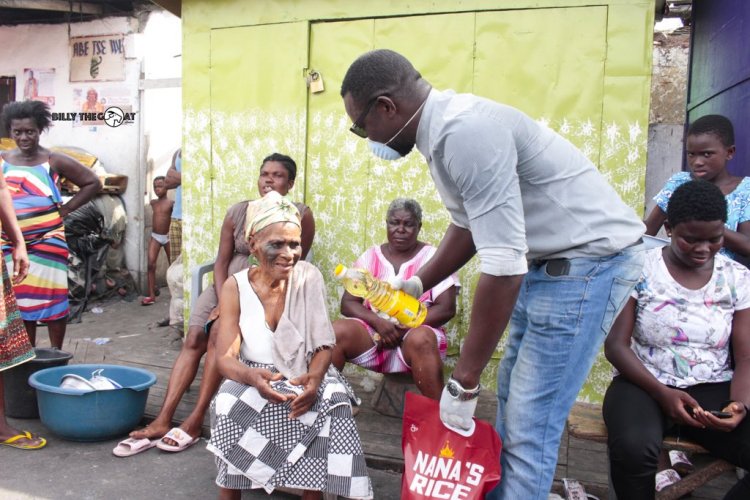An others centered Christmas
Help your kids get more out of Christmas

When we were kids, my sister and I knew that the Christmas season had arrived when the Sears catalog came sliding through the mail slot. Oh, the excitement and the contemplation to come! We’d sit for hours on our shag-carpeted floor, flipping pages and clipping items to arrange on our gift lists, new versions of which were promptly handed to our mother. Come Christmas Eve, we fully expected to find the goods beneath the tree, hidden in bright boxes with bows. So in our home, the arrival of Christmas was proclaimed with wish lists and store catalogs.
Sure, we celebrated the true reason for the season. In school programs we dressed in white and announced in accidental harmony the arrival of the King. But I can’t deny that, for me, the holiday was all about the gifts. Correction: all about receiving gifts.
Today, I watch my kids walking the same road. Can you blame them? Children throughout the generations have delighted in the mystery and excitement of Christmas gifts. And then there is the truth that Christmas is absolutely about gifts, or more accurately, the gift. The gift that cost the Giver everything — the gift of a Savior. And so I find myself torn between the childhood joy of Christmas and a desire to celebrate the season in a way that reflects our family’s faith and values.
It seems that Christmas moves us toward competing behaviors. On one side, we praise God for the birth of our Savior. On the other side we . . . scramble. And shop. And delight in all the loot. Around our house, the moods on Christmas Day are often directly dependent on the perfection of the gifts received. Those gifts are talked about at school and with friends for weeks on end. How many conversations begin with, “What did you get for Christmas?”
I want my kids to experience more of the truth behind Christmas so our family can be freed from the culture’s tradition of making it about ourselves and the things we accumulate. I want them to genuinely celebrate and worship — and yet still enjoy the gifts they receive in remembrance of the gift. To do so, I aim to create an others-centered atmosphere in our home, an environment of giving and service during the holidays. When our eyes are focused elsewhere, there’s a lot less time and energy to focus on what we’re getting this year.
Baby steps to an others-centered mindset
I couldn’t help but think about my days scouring the Sears catalog when I recently saw my kid doing the same thing through a Hobby Town USA mailer. Checking it all out, he had marked with a highlighter a number of things he wanted for Christmas.
“What are you up to?” I asked in the way parents do — already knowing the answer.
“Oh, I just thought I’d show you a few things I want.”
I looked at his choices. Nothing wrong with any of them. “Did you see anything for your sister?”
“No.” Pause. “I was just looking for me.”
Well, at least he was being honest. Often, I’m probably doing the same thing — looking out for me. But throughout the year — and especially as the catalogs and commercialism of Christmas arrive — I’m learning that there are opportunities to nudge our kids toward having an attitude and an awareness of blessing others. One year, I actually took my kids’ wish lists and purchased and wrapped a few of the coveted items. I then encouraged them to give those packages to someone in need, someone who would be thrilled to receive these things. It’s not something I’d try often, but for once I wanted my kids to recognize how giving away the gift they wanted is quite a profound act.
The delight of unexpected kindness
Here’s a fun family meeting idea: With your kids, consider for a moment who in your circle of acquaintances has had a hard year. Has someone lost a job or a loved one? Or are they simply alone? Neighbors, close friends, someone from school — whoever the individuals are, keep them in mind as you head to the store for one of your Christmas shopping outings. As a family, wrap and label the gifts, and deliver them as Christmas approaches. I have friends who, on Christmas Eve, deliver gifts anonymously. They park a few houses away with their lights off and send swift and speedy family members to place the gifts on the stoop. Then they ring the bell and run.
The pen is mightier . . .
Sometimes the most effective way to bless someone is pretty simple. Culture has trained us to believe that blessings arrive in pretty boxes accompanied by gift receipts. But time and commitment to a relationship are often the better gift.
A friend of mine inspired me recently through her dedication to a passing art form: the handwritten note. She sits with her children and pulls them out of texting mode for an evening, encouraging them to do what our grandparents did — simply write a letter about stuff. If you want to do the same, you can have your kids write about the simple things — that recent math test, a funny story, the friends they like to hang out with, what they’re worried or excited about. One of the sweetest byproducts of this others-centred, outside-their-comfort-zone exercise is creativity.
READ ALSO:
How to use music to get to the children
Children use skills learned in school to bless others, especially those in their lives who may feel a bit forgotten. And though Christmas is a great time to begin this exercise, it’s best if the gift is one of an ongoing commitment. Christmas letters in July? Why not?
A multitude of opportunities
There are countless “others-centered” activities at our fingertips. We don’t have to look far to find a homeless shelter needing supplies or a soup kitchen needing hands or a food bank needing shelf stockers. There are children who need warm clothes, neighbors who need help or friendship. Have we slowed down enough to know? Have we trained our kids to look outside themselves to see?
I often try to connect an others-centered worldview with the positive effects it has on us. So after my family and I give our time or our resources, I ask the question, “How does it feel?” When done on the sly, without getting something in return, the pure act of giving jolts even the jaded.
One year, my family made a trip to the dollar store, where we all pooled our money to buy coloring books requested by a local organization that provided disadvantaged kids with wrapped gifts.
My kids raced to the back of the store where the books resided. They perused all the options, loading our cart with a variety of books for girls and a separate stack for boys. As they worked, it struck them that each of these books would be some child’s Christmas gift.
“Is this all these kids are getting for Christmas?” one child asked.
“I don’t know, sweetheart. I do know that each kid will at least get to open something.”
The others pondered this. “We have to get them markers, too,” one said.
I watched and soaked in the moment. As we drove away, my passenger-seat child floated some music my way: “You know, Mom. I really don’t need anything for Christmas.”
“What do you mean?” I asked.
“Well . . . it’s just . . . I don’t need anything.”
I didn’t press him. We both understood. Faced with the fact that lots of kids would be thrilled to get a coloring book and markers — items my kids might consider peripheral — it made the hoped-for iPad a bit less desirable.
My husband, Jon, and I never want our kids to feel guilty about receiving gifts during this joy-filled season. We want them to freely enjoy the gifts they get in the same way that our heavenly Father wants us to enjoy the wonderful and amazing gifts bestowed upon us. But my hope and prayer is that remembering others this season and meeting needs will move the hearts and minds of my kids. What I hope they’ll gain is a clear recognition of the greatest gift ever given.
Written by Kay WYMA. Originally posted on focusonthefamily.com





































